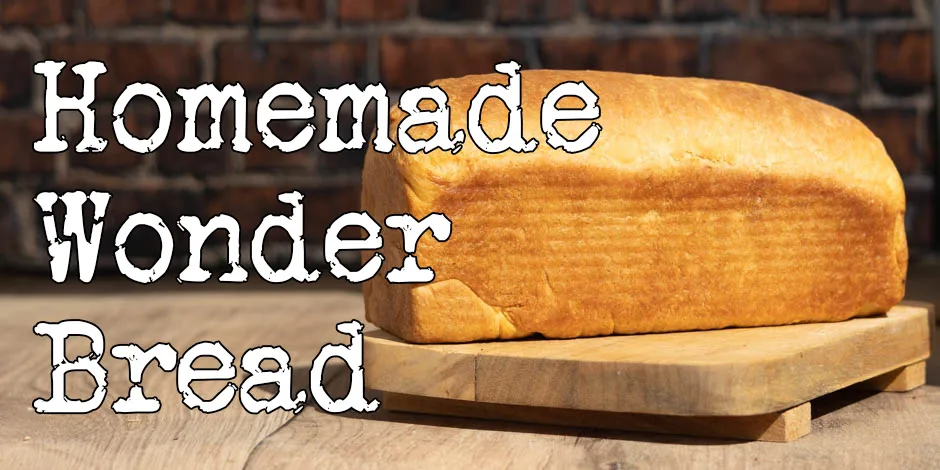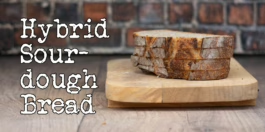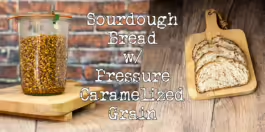Step into a world where cherished memories and mouthwatering aromas intertwine. Close your eyes and imagine the soft, pillowy slices of Wonder Bread, a symbol of comfort and nostalgia. But what if we told you that the enchanting taste of homemade Wonder Bread is within your reach? In this article, we embark on a culinary adventure, sharing a treasured homemade Wonder Bread recipe that will transport you back to the warm embrace of childhood and the indescribable joy of biting into a slice of pure homemade bliss.
I’ve previously made white bread recipes. Try my Shokupan made with yeast or my sandwich bread leavened with a sourdough starter.
If you are just here for the recipe, you can press the button underneath to be automagically transported to the recipe:
Jump to RecipeSo, what is this Wonder Bread, really?
Wonder Bread holds an esteemed position as an iconic staple in American households, with a history that intertwines with the nation’s culinary landscape. I will tell you the fascinating history of Wonder Bread and the health considerations associated with its consumption. Additionally, I compare Wonder Bread to the diverse and artisanal bread culture prevalent in Europe.
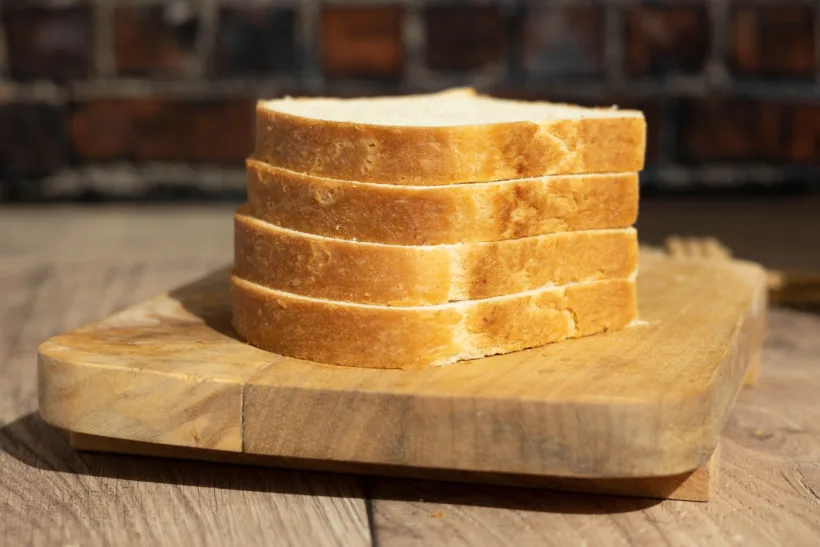
The Fascinating History of Wonder Bread
Wonder Bread originates in the United States in 1921 and was one of the first to be sold pre-sliced nationwide in 1930. The brand is currently owned by Flowers Foods in the United States.
The Taggart Baking Company of Indianapolis, Indiana, began producing Wonder Bread which debuted on May 21, 1921, following a blind promotion with ads that only stated a “Wonder” was coming on that date. The brand was named by the vice president for merchandising development Elmer Cline, who was inspired by the International Balloon Race at the Indianapolis Motor Speedway. Cline was filled with “wonder” by the scene of hundreds of balloons creating a kaleidoscope of color, resulting in the iconic red, yellow, and blue balloons featured on the Wonder Bread logo.
Wonder Bread quickly became a popular choice for American families. It was seen as a symbol of progress and modernity, and its white color and soft texture made it appealing to children. The company also invested heavily in marketing, and Wonder Bread soon became one of the most recognizable brands in the country.
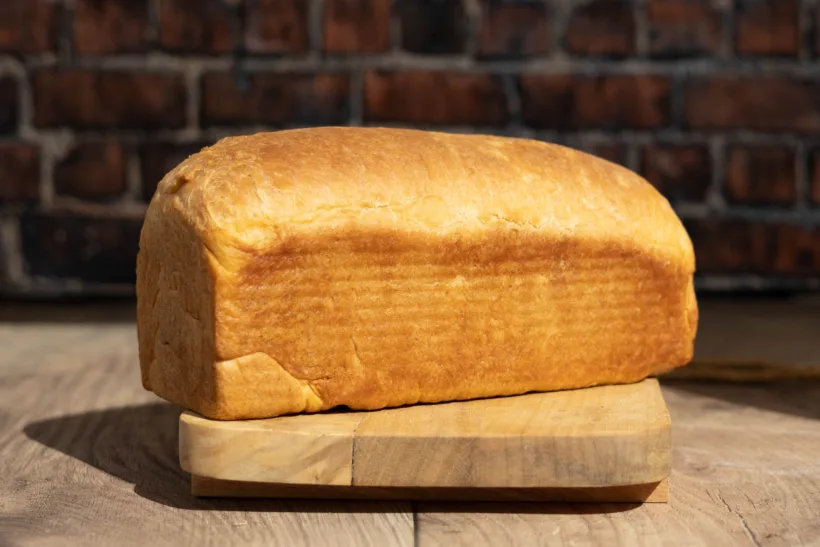
In recent years, Wonder Bread has faced increasing competition from other brands of bread, as well as from healthier alternatives like whole wheat bread. The company has also been criticized for its use of artificial ingredients and preservatives. As a result, sales of Wonder Bread have declined in recent years.
It remains to be seen what the future holds for Wonder Bread. The company has made some efforts to appeal to health-conscious consumers, but it remains to be seen whether these efforts will be enough to reverse the decline in sales. Only time will tell whether Wonder Bread can maintain its status as a beloved American icon.
Wonder Bread and Health Considerations
Nutritional Content and Enriched Flour
Wonder Bread gained popularity for its enriched flour, which was fortified with additional vitamins and minerals. This enrichment process aimed to address nutritional deficiencies prevalent during the time of its introduction. Enriched flour typically includes added nutrients such as iron, niacin, thiamin, riboflavin, and folic acid.
Enriched flour undergoes a refining process where the outer bran and germ layers of the wheat kernel are removed, resulting in a finer texture. While the enrichment process helps restore some of the lost nutrients, it’s important to note that this refined flour composition lacks certain dietary benefits found in whole-grain bread.
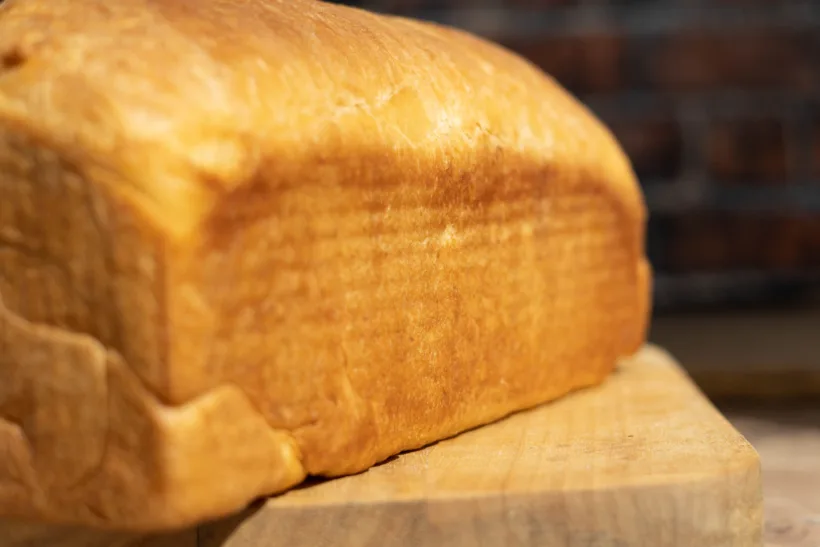
Dietary Impact
Due to its refined nature, Wonder Bread has a higher glycemic index compared to whole-grain bread. The glycemic index measures how quickly carbohydrates in food raise blood sugar levels. The refining process of the flour used in Wonder Bread removes the fibrous bran and germ layers, which slows down digestion and absorption of carbohydrates, resulting in a more gradual increase in blood sugar levels.
It’s worth noting that Wonder Bread still offers some essential nutrients due to the enrichment process. However, as dietary knowledge has evolved, there is now greater emphasis on consuming whole foods and natural sources of nutrients.
Wonder Bread and European Bread Culture
European bread culture stands in contrast to the standardized production process of Wonder Bread. The European countries embrace a diverse bread culture deeply rooted in tradition, craftsmanship, and the use of local ingredients. European bread varieties often prioritize natural fermentation methods, sourdough starters, and a wider range of whole grains.
Throughout Europe, people celebrate bread for its diverse flavors, textures, and shapes. The bread reflects unique regional influences and centuries-old baking practices. Artisanal bakeries abound, where skilled bakers take pride in their craft and meticulously choose high-quality ingredients to create bread that provides both nourishment and sensory delight.
This culture is spreading throughout the world, although it’s mostly within the foodie culture. That’s often the precursor to any food entering the mainstream, so we’ll see how that goes.

The dough in this homemade wonder bread recipe
Vitals
| Total weight | 1009 grams |
| Pre-fermented flour | 6.3% |
| Hydration | 60% |
| Yield | 1 wonder bread |
Dough
The dough for this homemade wonder bread is enriched with butter, sugar, and whole milk, which gives it a luxurious interior and a deeply caramelized exterior. The amount of salt is 2% of the flour weight, which enhances the flavors in the bread perfectly.
| Weight | Ingredient | Baker's Percentage |
|---|---|---|
| 35g | all-purpose flour | 100% |
| 170g | whole milk (3.5%) | 485.7% |
| Weight | Ingredient | Baker's Percentage |
|---|---|---|
| 525g | all-purpose flour | 100% |
| 210g | whole milk | 40% |
| 7g | instant yeast | 1.3% |
| 25g | butter, unsalted | 4.8% |
| 25g | sugar | 4.8% |
| 12g | salt | 2.3% |
If you want to tinker with the formula: change quantity, hydration, weight, or other things, you can do that here in my bread calculator.
The conclusion of this homemade wonder bread recipe
In the world of bread-making, making homemade Wonder Bread reveals a range of delicious flavors and unmatched freshness. When comparing your homemade loaf to the factory-produced Wonder Bread, there is a clear contrast. The taste of your homemade bread is incomparable, as it lacks industrial additives and instead boasts a delightful flavor. It is made with untreated flour and infused with the aromatic essence of butter, creating a captivating experience for your senses.
While your homemade Wonder Bread is satisfyingly soft, it has a slightly firmer texture compared to the exceptionally soft factory counterpart. Nonetheless, it maintains a pleasant tenderness that delights your palate with every bite.
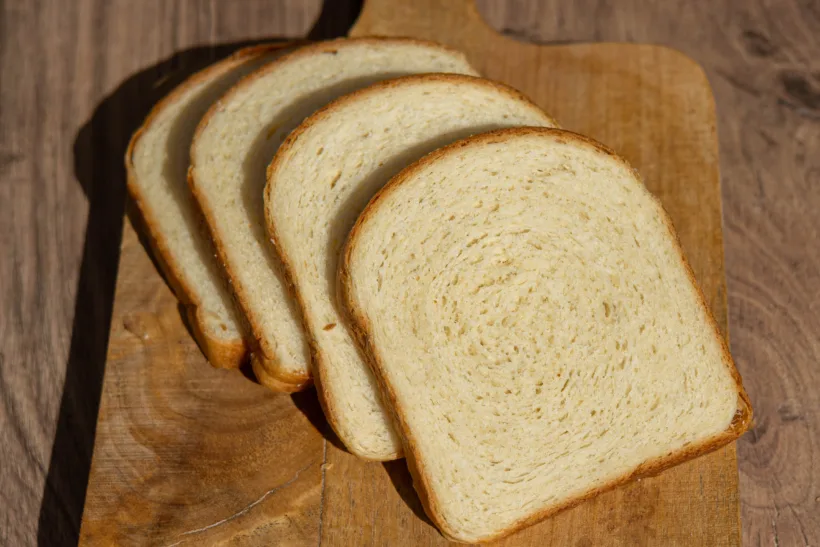
Another benefit of your homemade Wonder Bread is its extended shelf life, thanks to the inclusion of tangzhong. Tangzhong is a Chinese bread-making technique. When stored properly, it stays fresh for up to a week. However, it’s important to note that without preservatives, it is best enjoyed within this timeframe. Unlike factory-made Wonder Bread, your homemade version cannot match its extended shelf life, which I see as positive.
Making homemade Wonder Bread is a testament to authenticity, flavor, and nourishment. With every slice, you can appreciate these things:
- Your loaf is free from industrial additives
- Carries the enticing aroma of butter
- Offers an unmatched taste.
Enjoy the satisfaction of baking at home as you explore the endless possibilities within your own kitchen.
Please share this homemade wonder bread recipe on social media
This is my homemade wonder bread recipe. If you like the recipe, please consider sharing it with like-minded bread lovers on social media.
If you make it and post it on Instagram, please tag me as @foodgeek.dk so I can see it. That would make me very happy.
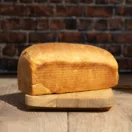
Homemade Wonder Bread
Ingredients
Tangzhong
- 35 g all-purpose flour
- 170 ml whole milk
Dough
- 210 ml whole milk
- 25 g butter, unsalted
- 525 g all-purpose flour
- 25 g sugar
- 12 g table salt
- 7 g instant yeast
For brushing
- 25 g butter, unsalted divided
Instructions
Make tangzhong
- To a microwave-safe bowl, add all-purpose flour and whole milk. Mix it until the flour is dissolved.
- Microwave high until the mixture reaches 65°C/149°F, and mix it until it's homogeneous.
Make dough
- To 210 ml or one scant cup of whole milk, add the melted butter and the tangzhong and mix it.
- Check that the temperature is below 32°C/90°F. If it isn't, leave it to cool before mixing it into the dough.
- To a medium bowl, add the all-purpose flour, sugar, table salt, and instant yeast and combine them all.
- Then, add the milk mixture and work it into the flour mixture. When it gets too dry, move the dough to your counter and knead it.
- Stop when you have a supple and nice dough. It should be tacky but not sticky. It's okay if there is flour left on the table.
- Put the dough back in the bowl, cover it, and let it double in size. It takes about an hour.
Shape the bread
- Flour your counter lightly, and add the dough. Then roll your dough out to about 22×35 centimeters, about 9×14 inches.
- Roll the dough tightly from the shortest sides, and seal the seams and edges.
- Spray or butter your pan, and move the dough to the pan,
- Let it double in size covered. It also takes about an hour.
Bake the bread
- Heat your oven to 180°C/350°F with fan-assist, and brush the bread with melted butter.
- Then put it in the oven.
- Bake for 40 minutes or until the bread is 90°C/195°F in the middle. Take the bread out, and put it on a wire rack.
- Brush it with melted butter all over, and then let it cool.



